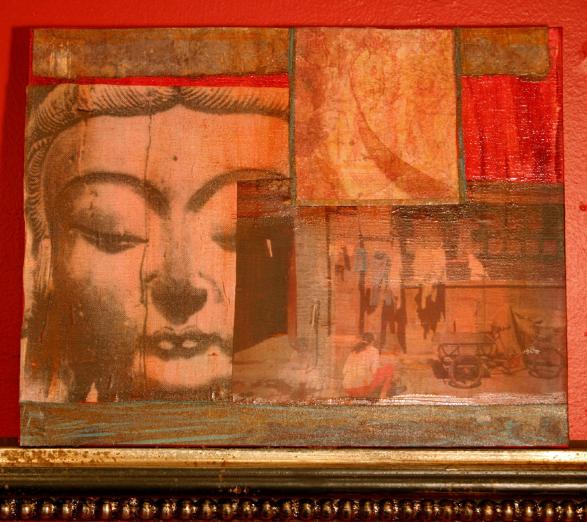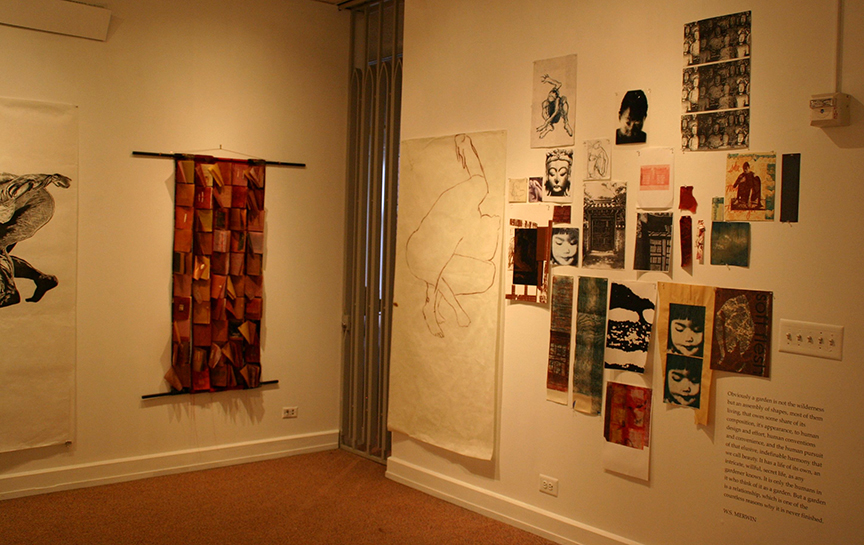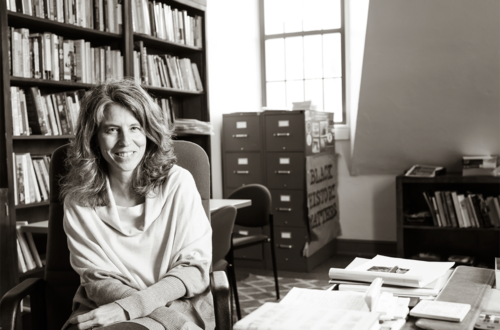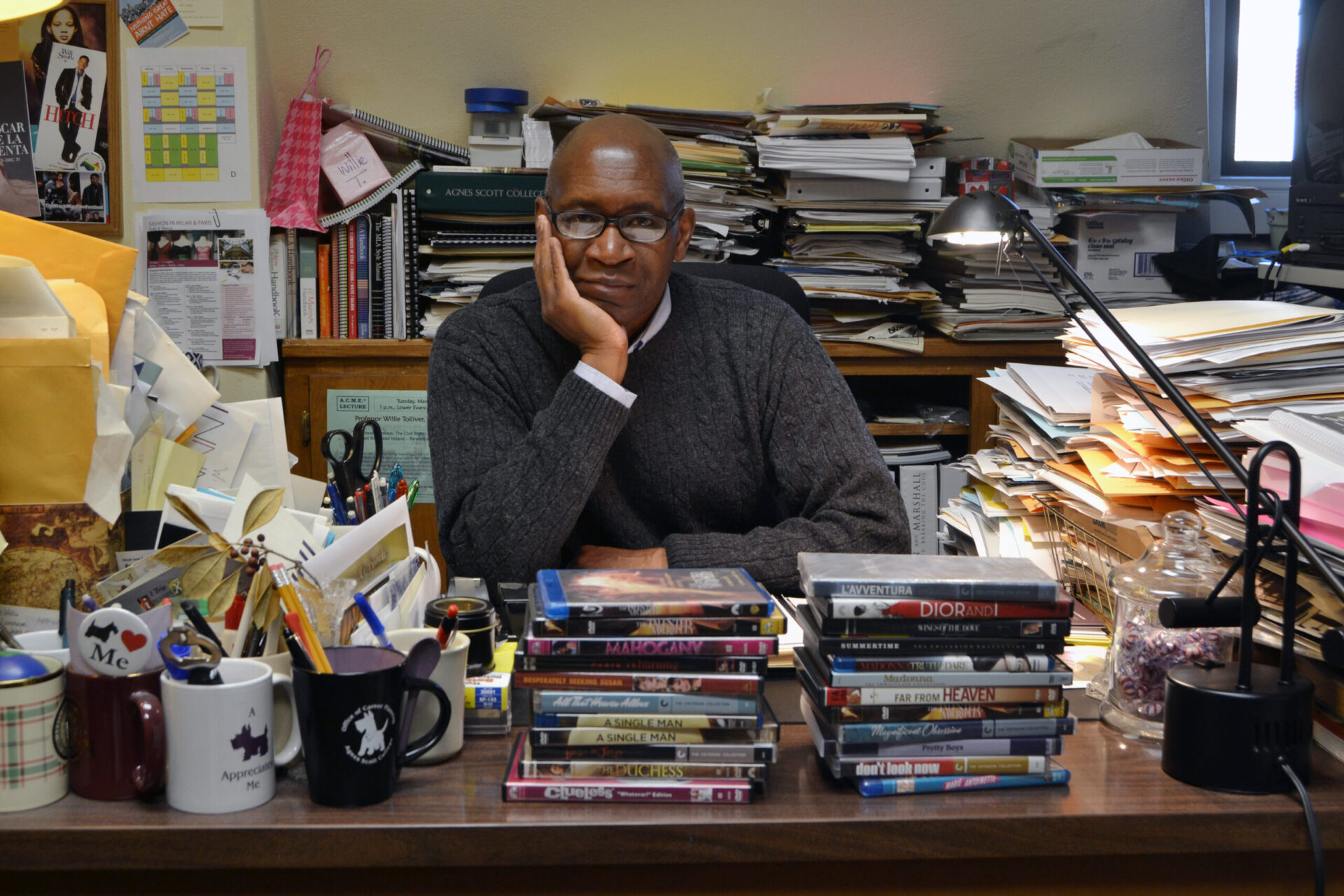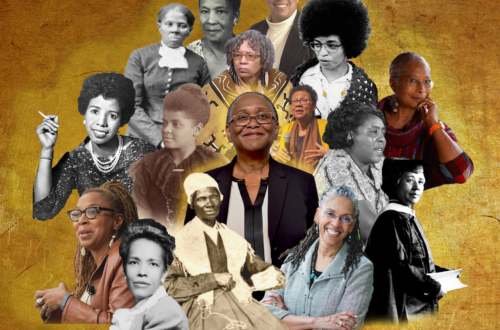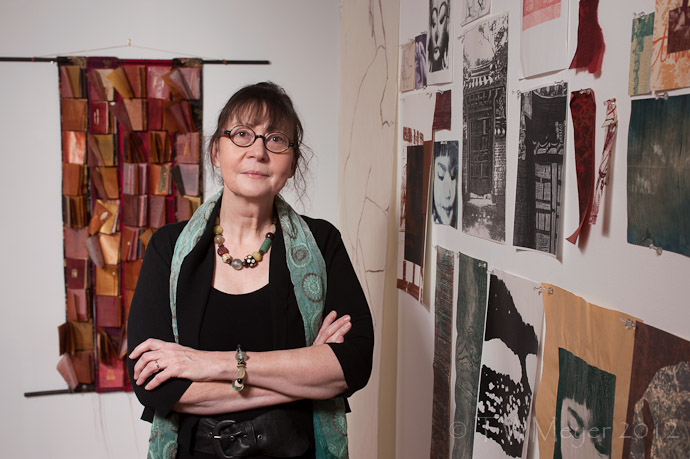
showing/thinking: Anne Beidler
Anne Beidler is a professor of art at Agnes Scott College. She holds a B.A. from Earlham College, a B.F.A. from the University of Connecticut, Storrs, and an M.F.A. from the University of Massachusetts, Amherst. Professor Beidler has been on the faculty of Agnes Scott College since 1992 and teaches drawing, printmaking, painting and book-arts. She is particularly interested in inspiring students to find intersections between their creative work and engagement within the other academic disciplines. Below are Professor Beidler’s reflections on her scholarly thinking and creative process, from the 2012 Dalton Gallery exhibition showing|thinking, a series of exhibitions that highlighted the work of faculty and staff on campus:
“Obviously a garden is not the wilderness but an assembly of shapes, most of them living, that owes some share of its composition, its appearance, to human design and effort, human conventions and convenience, and the human pursuit of that we call beauty. It has a life of its own, an intricate, willful, secret life, as any gardener knows. It is only the humans in it who think of it as a garden. But a garden is a relationship, which is one of the countless reasons why it is never finished.” -W.S. Merwin
process as a journey…
My work in this exhibition about process includes a collection of inter-related mixed media books, painting and prints created beginning around 2000 and continuing to the present. Each of the included segments interweaves my areas of interest as an artist. My process is to employ my own drawings, photographs and prints in my work. I also use collected materials, ephemera from previous projects and found images. Media include ink, paint, wax, seeing, collage and found objects. Objects like tin niches (small places of worship) seem to echo the temple and garden entryways I have photographed and become a kind of gateway within a piece. As a printmaker I have always been interested in the technical overlay of print methods and images. I like to experiment with ways in which printmaking media may begin to come together with painting. As well, the concept of the artist book as an object held in the hand or viewed closely thus creating an intimate interaction between artist and viewer, are all at the center of my visual exploration.
the unnamed…
One series of large scale prints was begun in summer 2001 as an exploration into the myth of Persephone and her descent into the underworld. Then the event 9/11 took place. The work was completed as a memorial to the thousand of anonymous people who were lost in the underworld of burning steel.
I have recently begun to rethink these images in terms of the un-named and faceless people who are caught in the violence of war of political situations beyond their control. Are they sisters, fathers, mothers or children? How much loss they must have experienced.
In my own life, the birth mothers of my daughters, though never to be known, are always present for me like ghosts of memories. In her introduction to Karin Evans’ book, “Lost Daughters of China”, Anchee Min takes on the role of stern Ai-yi or auntie, telling the “raw truth” of their histories. She tells the lost daughters that for their birth mothers, who for whatever tragic reason had to relinquish them, they will be forever “a broken arm hidden inside the sleeve.”
reclaiming the female body…
I have searched for an image that conveyed essential woman, not determined by notions of age or physical beauty or the gaze. Variations on a simple crouch or squat seem most compelling. It is a stance of our daily life functions of giving birth, of elimination and of bathing. This simple visual metaphor seems an appropriate starting point for reclaiming images of ourselves.
These images are intended to transcend specific age and reveal the constant, internal and evolving self found in the private space of thought, body and the personal. The women’s bodies in each piece are close to life size and can be placed on the wall in order to create a dynamic exchange with the viewer.
Buddhism…
On my first trip to China, I brought along a small book of one hundred poem by Han-shan from the T’ang Dynasty. These writings by the reclusive, yet deeply socially aware Buddhist monk who is thought to have lived anywhere between 627 and 750 A.D. I have returned to this volume many times.
“I spur my horse past the ruined city;
The ruined city, that wakes the traveler’s thoughts:
Ancient battlements, high and low;
Old grave mounds, great and small.
Where the shadow of the single tumbleweed trembles
And the voice of the great tree clings forever,
I sigh over those common bones-
No roll of the immortals bears their names.”
(#29 translated by Burton Watson)
Han-shan’s poem echoed as I visited famous spots such as Xian’s Terra-cotta Warriors, the Forbidden City, and the Great Wall and most strongly when walking down an unknown street in a city or looking out a train window across field lit with many little fires from farmers’ brush piles. It was the unnamed souls of Han-shan’s poems, whose presence is strong in these places that have resonated most deeply for me. China’s history in the recent centuries makes this sentiment more poignant.
Ancient images of the Buddha and the goddess, Guan Yin, who gives solace to the hurt and provides the blessing of children, evoke a place of contemplation and peace. As well I find the ever-transforming garden to be a compelling and hopeful visual metaphor.
The work I have created often contains layered levels, like pages, that become gateways to new images the same way garden or temple gateway invite exploration and evoke an ancient place often visited perhaps over multiple centuries by anonymous wanderers.
Below are images of Beidler’s work in the 2012 showing/thinking exhibition:



